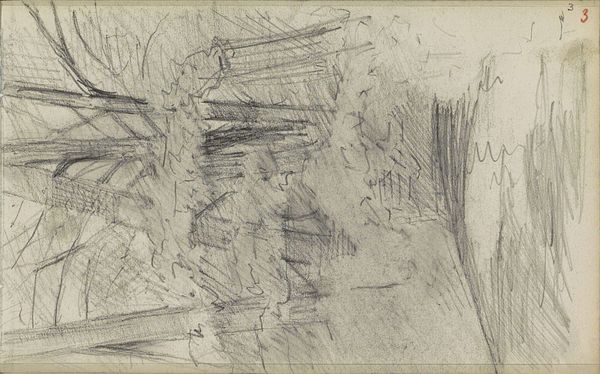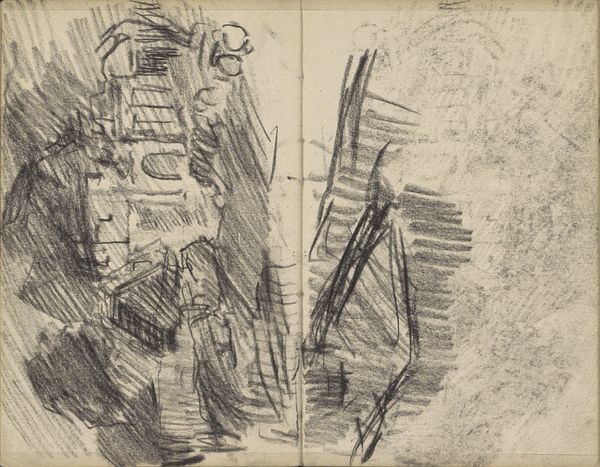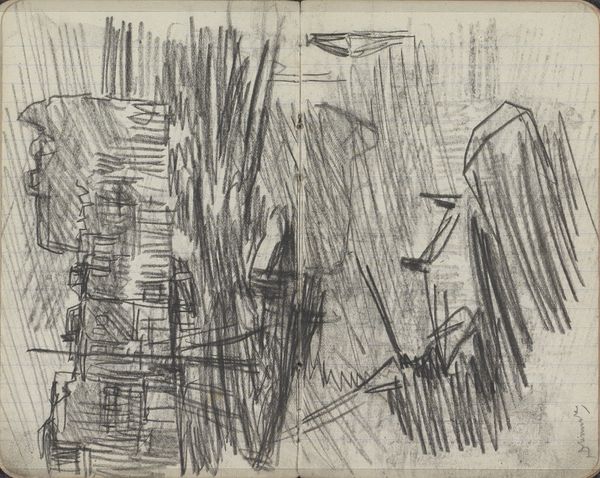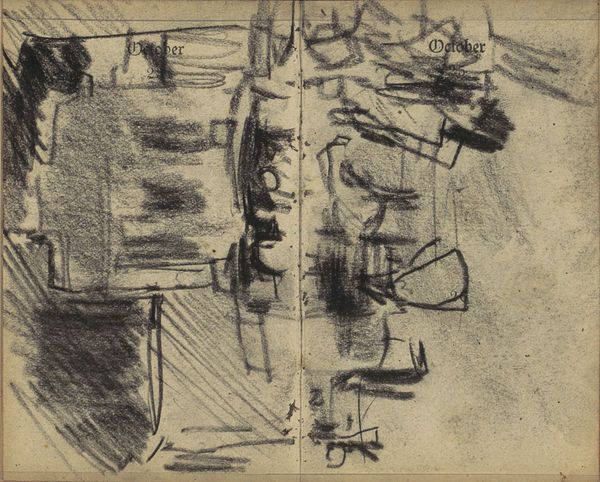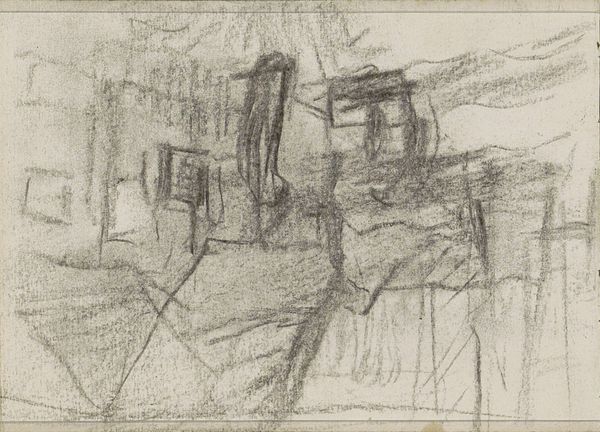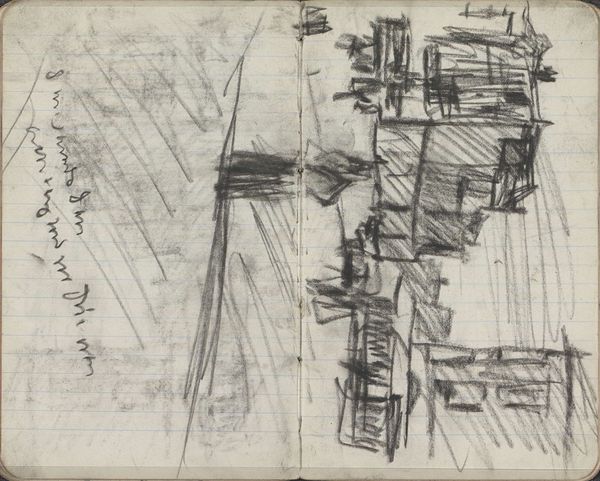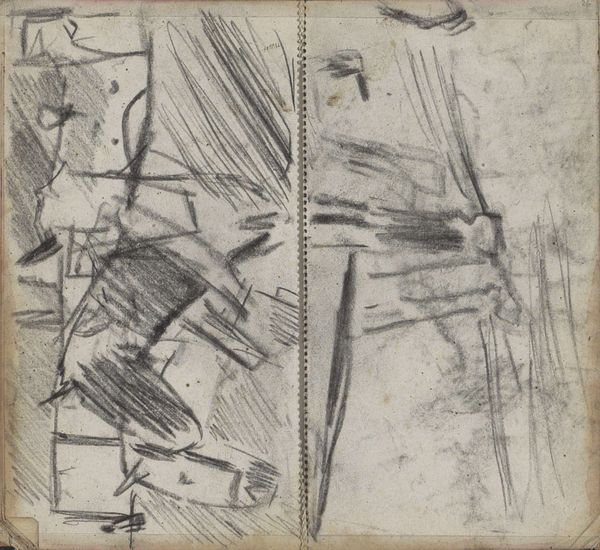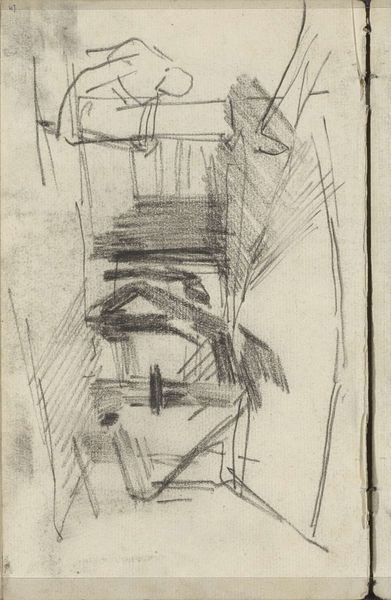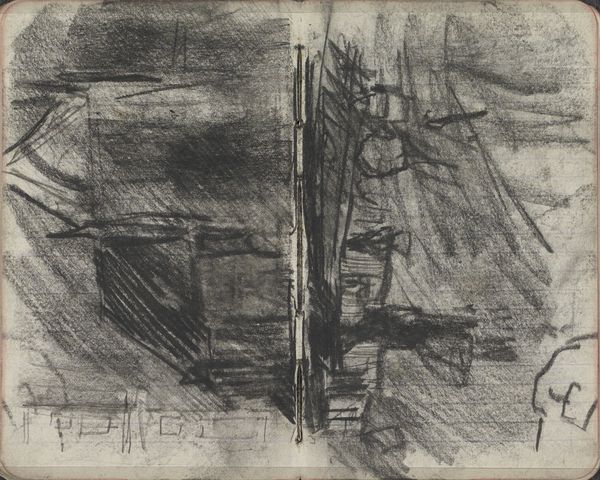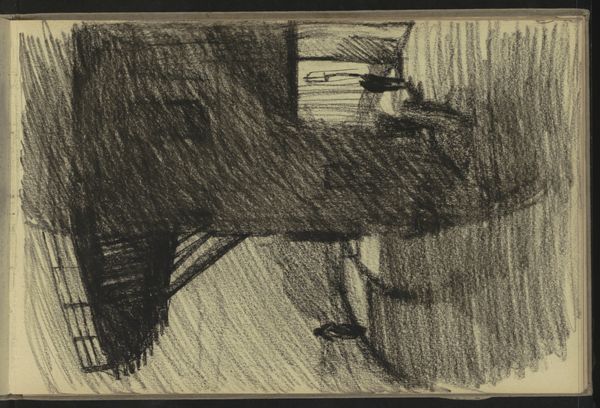
Copyright: Rijks Museum: Open Domain
Curator: This is a pencil drawing by George Hendrik Breitner, dating from 1893. It’s titled “Vrouwen op de Dam te Amsterdam,” now held in the Rijksmuseum collection. Editor: Immediately striking! So immediate, so raw… it feels like a snapshot snatched straight from a bustling city day. All these furiously scribbled lines almost tremble with energy. What was the story of it coming into existence, materially speaking? Curator: Well, as you can see, it’s executed in pencil on paper—a medium that lends itself to exactly the kind of rapid documentation Breitner was known for. More than just a cityscape, I think it captures a particular moment and feeling, one laden with symbolic weight of Amsterdam as a commercial hub. Editor: Ah, that’s what intrigues me! A provisional pencil drawing versus the grand narratives so often attached to cities. Was it made on-site? I'm fascinated by how accessible pencil and paper made art-making, offering mobility and an ease that aligns with the fleeting impressions of modern urban life. Curator: Undoubtedly made en plein air. And I agree about that mobility, yet this immediacy is deceiving. Note how the suggestive composition creates something that is beyond only an optical reality of that busy market square: a narrative that echoes in our own contemporary consciousness. Editor: Narrative, yes, but what’s particularly interesting here is how Breitner used the very materiality—the graphite, the hasty marks—to conjure this specific scene, as opposed to the conventional ways urban landscapes were depicted in this era. What sort of surface is the artwork upon; it seems to show some type of laid lines... Curator: He sketched it in a bound notebook, complete with ruled lines to contain notes on various financial data for later. His deliberate marks of the urban landscape upon these rigid organizational patterns suggests a compelling dialog between order and dynamism. This juxtaposition offers insight into Dutch urban growth and how social relations, commercial culture, and personal subjectivity interweave within the drawing's layers. Editor: Yes, the lined paper is wonderful! You see, this casual approach, which leverages a material like inexpensive notebook paper, renders the work so vibrant, as a testament to artistic interpretation rather than exact replication. Thank you! I now recognize this more clearly by examining materiality in conjunction with symbolic weight. Curator: Indeed. The layered meanings unearthed reveal how a simple sketch captures not just a scene, but a vision laden with the pulse of the city.
Comments
No comments
Be the first to comment and join the conversation on the ultimate creative platform.
